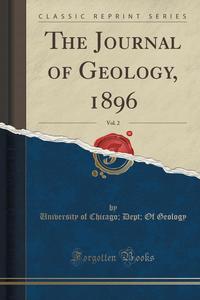Excerpt from The Journal of Geology, 1896, Vol. 2
Only within recent years has detailed and independent work been undertaken in widely separated parts of this vast area, and as yet no sufficient data is at hand for structural, or even for petrographical correlation throughout the whole.
Complete geological maps, showing the structural relations and chronological sequence of all the crystalline formations, are undoubtedly what must be looked forward to as the ultimate aim of work within this region, but the most sanguine will surely admit that we are at present a long way from any such reality. Meanwhile, in the absence of paleontological evidence, the study of the rocks from the point of view of genesis and the establishment of petrographic correlations will do much toward furnishing the positive basis of knowledge upon which final solution of complex structure must rest.
Some of the notions regarding petrographic sequence and the origin of foliation, enforced by masters of geology high in authority, have obscured rather than advanced the problems presented by the crystalline rocks in eastern North America. Not only have we been taught that the mineralogical and structural characters of these rocks are safe indices of their superposition and relative age, but the interpretation of all parallel structures as proofs of sedimentation has led to the conclusion that igneous rocks are rare, if not altogether absent, in these oldest and generally foliated formations of the earth"s crust. Now, however, better conceptions are beginning to prevail. No longer do we regard the petrographic character of a crystalline rock as any criterion of its age, while modern methods have enabled us to identify the abundant igneous rocks of ancient times in spite of the misleading structures imparted to them by secondary causes.
Object of this paper. - The present writer has had frequent occasion to insist on the presence of such disguised igneous masses in the oldest geological formations, and to dwell upon the methods by which their origin may be established.
About the Publisher
Forgotten Books publishes hundreds of thousands of rare and classic books. Find more at www.forgottenbooks.com
This book is a reproduction of an important historical work. Forgotten Books uses state-of-the-art technology to digitally reconstruct the work, preserving the original format whilst repairing imperfections present in the aged copy. In rare cases, an imperfection in the original, such as a blemish or missing page, may be replicated in our edition. We do, however, repair the vast majority of imperfections successfully; any imperfections that remain are intentionally left to preserve the state of such historical works. Это и многое другое вы найдете в книге The Journal of Geology, 1896, Vol. 2 (Classic Reprint)















